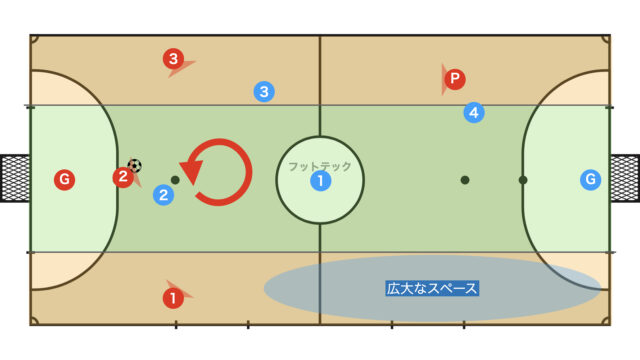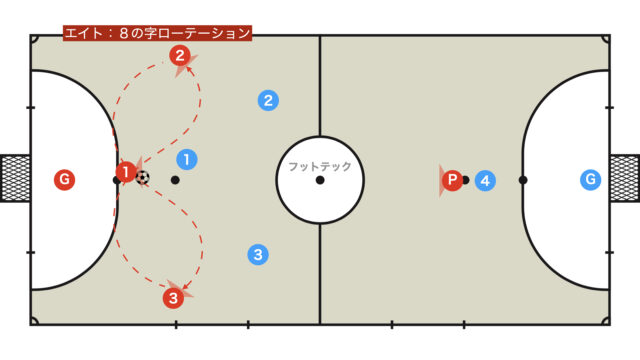Have you ever heard the term “false pivo” while playing futsal?
However, in reality, very few people seem able to explain what “false pivo” actually is.
In short, “false pivo” generally refers to a pivo—or its formation—that creates space on the opposite side by positioning on the flank.
This article will thoroughly explain the tactical intentions behind the false pivo formation and the specific rotations it employs.
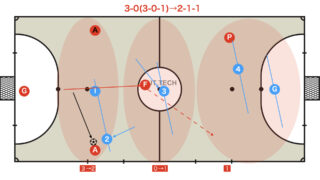
What is false pivo?
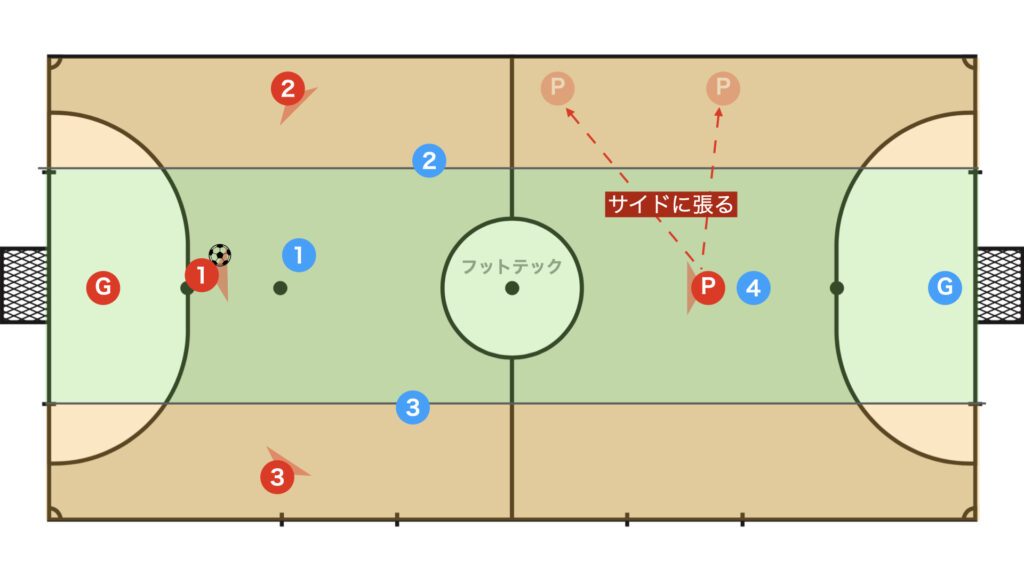
False pivo originates from the concept of the false nine in soccer, and it is a tactic made famous by former Japan national team coach Miguel Rodrigo, who had the pivo positioned on the flank because a central pivo failed to create an effective starting point.
It assumes a different role from the conventional pivo—whose primary task is to initiate plays from the frontline—by either dropping into the second line to participate in build-up play while masquerading as a pivo, or by positioning on the flank to create space on the opposite side.
In short, it is used in both senses.
Although context usually makes the meaning clear, when referring to a formation it is more understandable to say “false pivo positioning” or “false pivo formation.”
Tactical Intentions
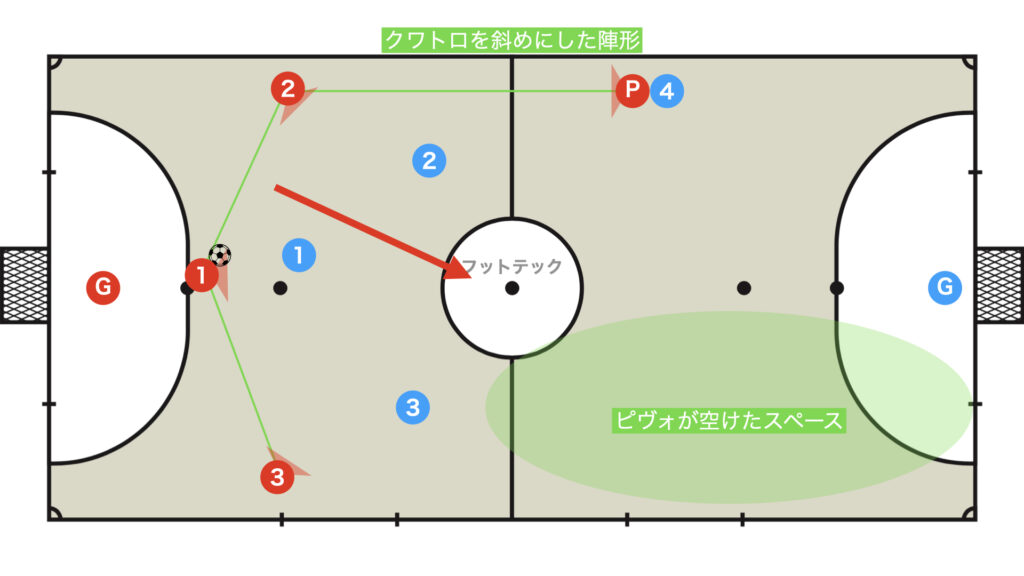
Effectively utilizing the space on the opposite side created by the pivo moving to the flank,
the 3-1 formation, in which the pivo is positioned on the flank, can be seen as a variation of the quatro formation.
Since it incorporates several tactical elements of the quatro, it can be described as a tactic that is essentially a blend of 3-1 and 4-0.
Some teams transitioning from a 3-1 to a 4-0 formation even adopt it as practice for the 4-0 system.
Overview of the threesome rotation (hedondo)
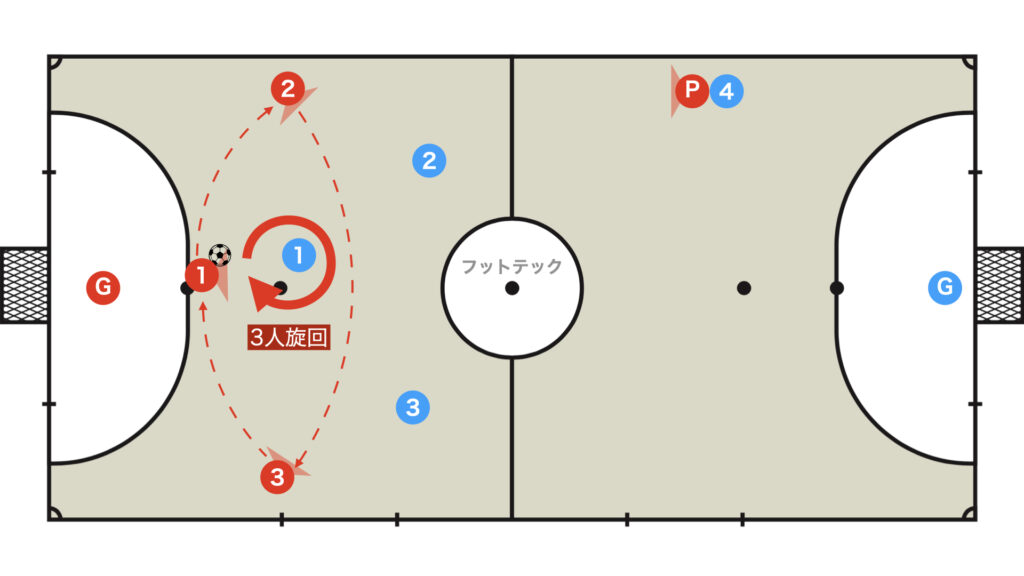
The rotation of a specific number of players in a given direction is referred to as a rotation or hedondo.
In the false pivo rotation, it is common for the three players at the back to rotate clockwise, as shown in the figure above.
Forming a vertical 3 on line
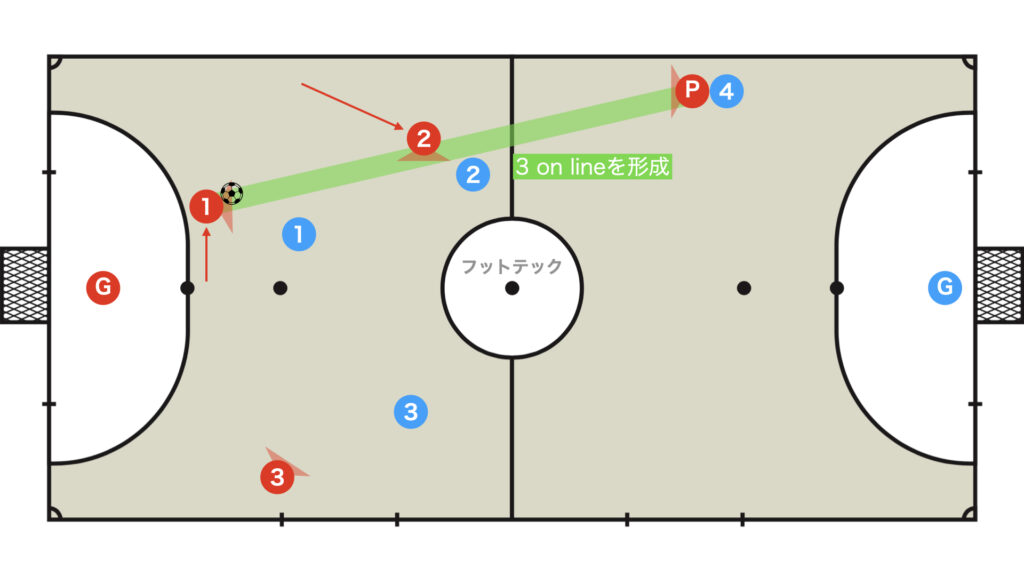
By having the ala take a high position and the fixo move toward the side where the pivo is located, the fixo, ala, and pivo together form a 3 on line.
With the ala positioned high, the formation temporarily resembles a 2-1-1 setup.

First, focus on the duo relationship
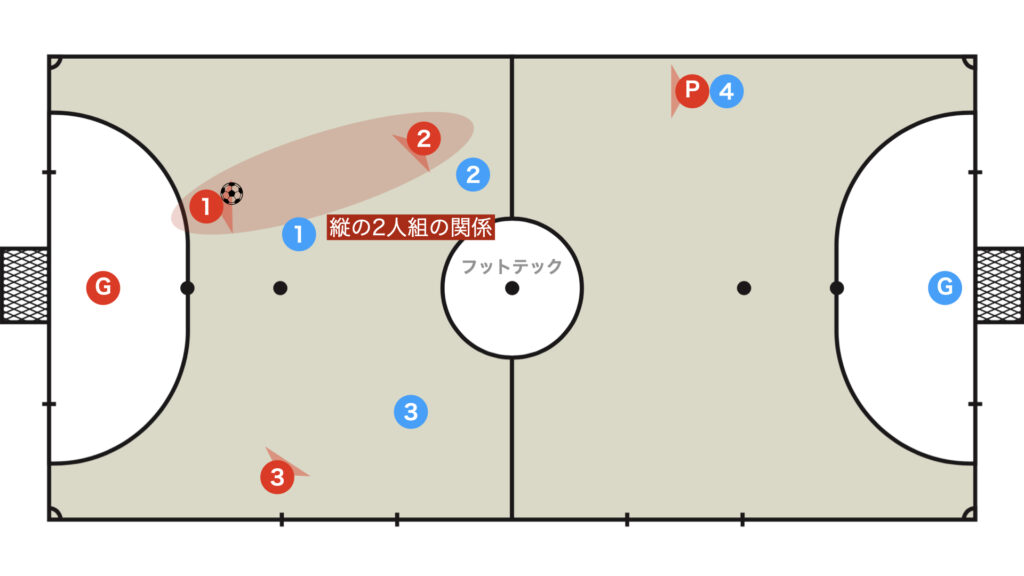
First, try to break through by focusing on a vertical duo (ala–fixo) without involving the pivo.
- Volante
- Block & Continue
- Middle Parallera
- Middle one-two
For those who want to know more about the vertical duo, please read the following article.
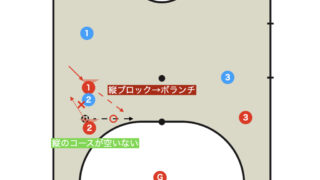
When the duo fails to break through: using the pivo as a conduit for a third attack
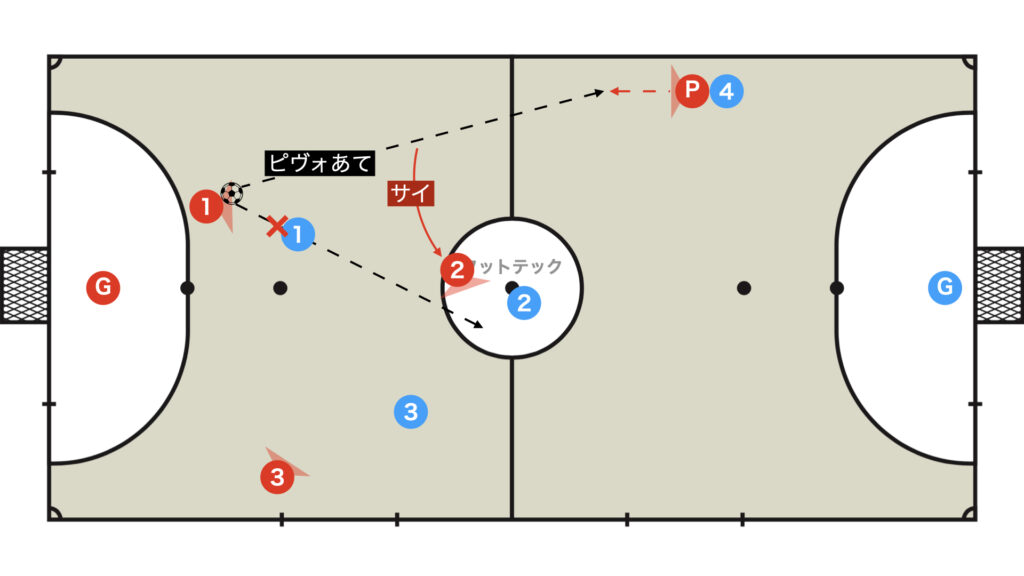
When the vertical duo is unable to break through, the second player, via the pivo, transitions into the role of the third attacker.

When a pivo pass is not possible: expanding to the opposite side to form a duo
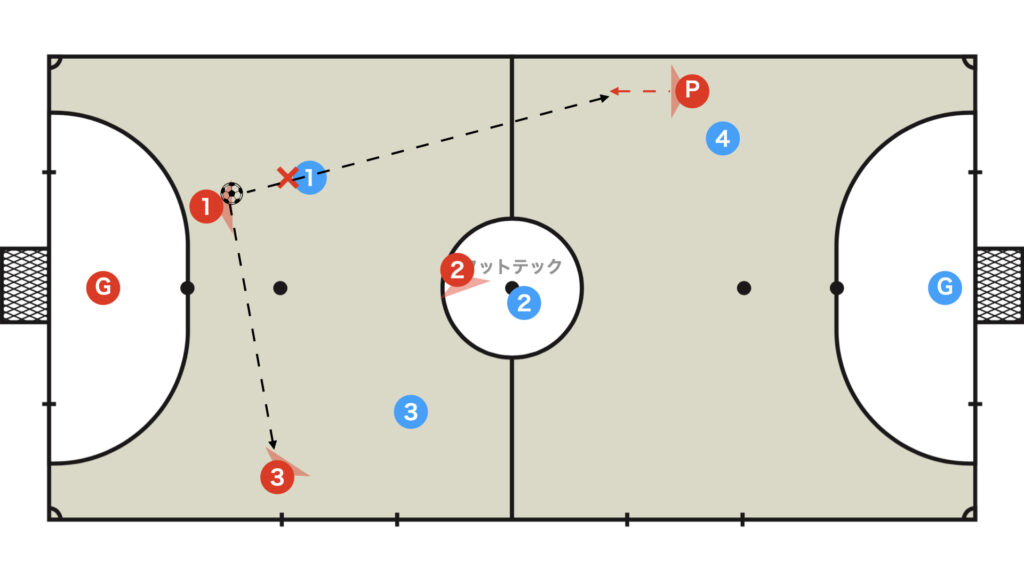
If a team is unable to execute a pivo pass or wishes to effectively utilize the space on the opposite side, they will expand the play to that side in order to form a duo.
When the ball holder is not pressed: supporting from between the lines
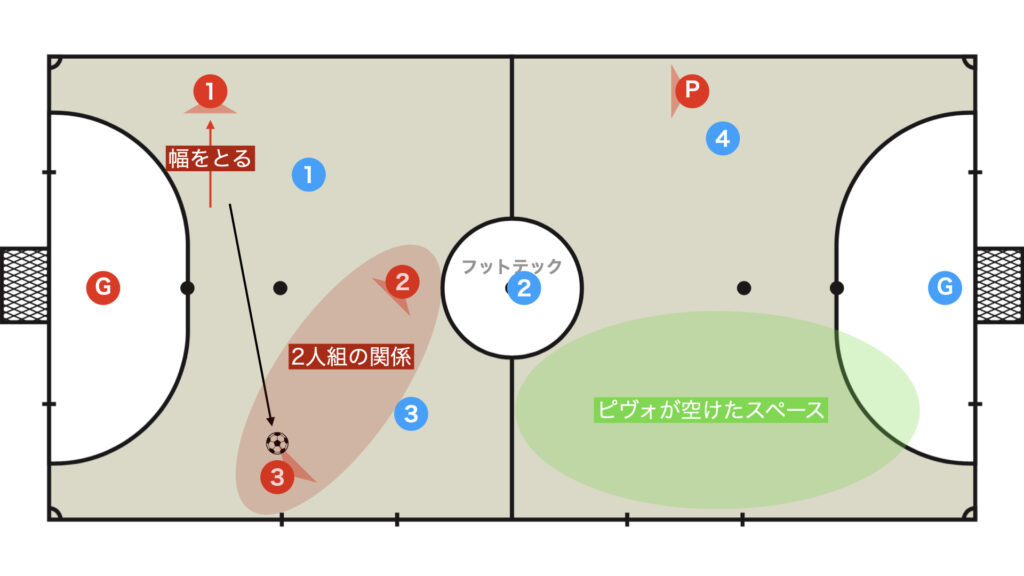
By establishing a duo with Red 2 and Red 3, the team effectively utilizes the space vacated by the pivo.
- One-two
- Parallera
- Block or Curtain
Additionally, if the opponent tends to employ a zonal defense, Red 2 also has the option to turn in the space between the lines.
When the ball holder is pressed: parallel support
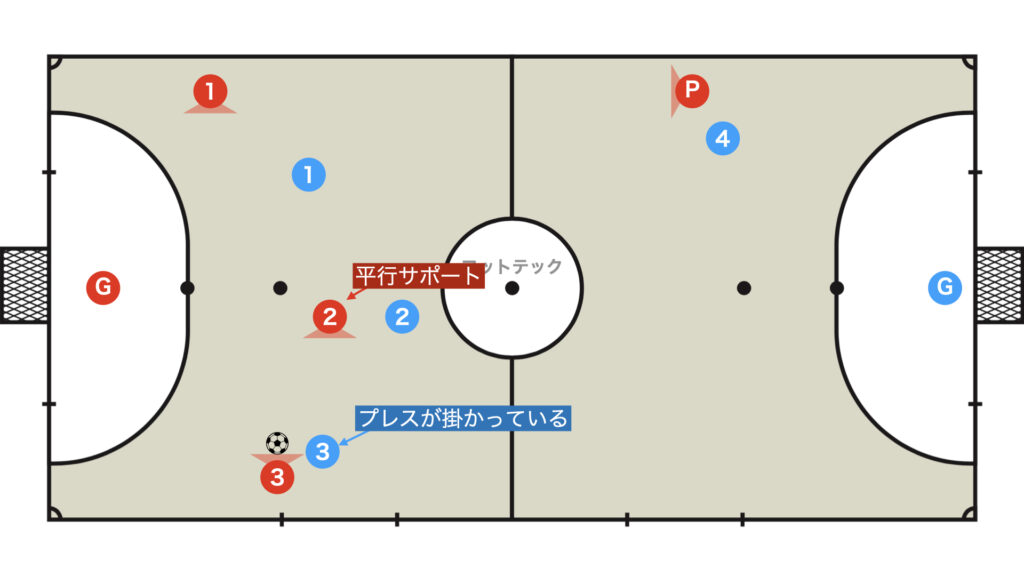
If the ball holder is pressed, dropping down to a parallel position to attempt a simple one-two is effective.
If the ball holder executes a Central dribble, support is provided through a block.
When the duo fails to break through: using the third player
Diagonal pivo pass: from the second to the third
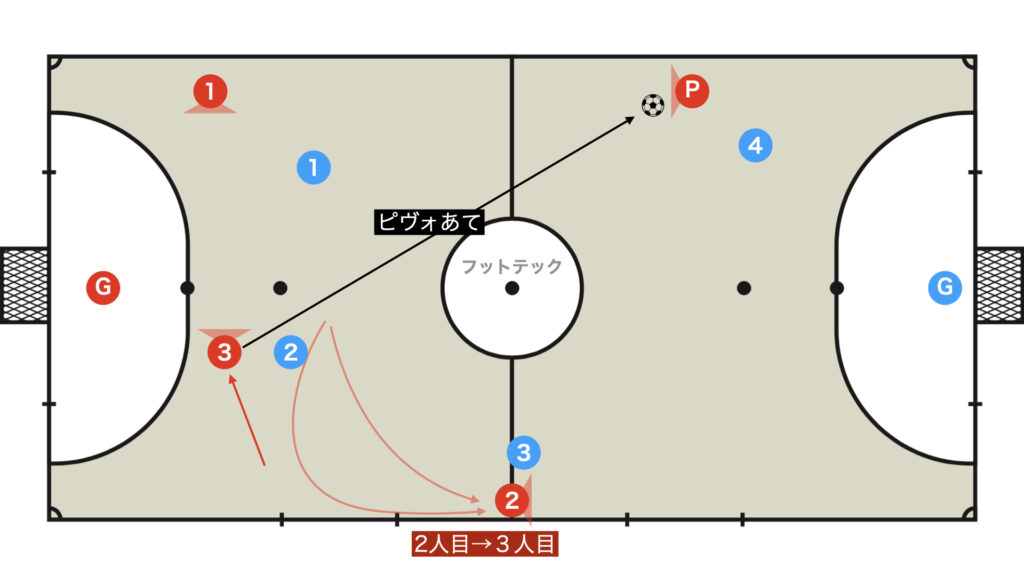
When the duo is unable to break through, focus on using the pivo to transition the second player into the role of the third attacker.
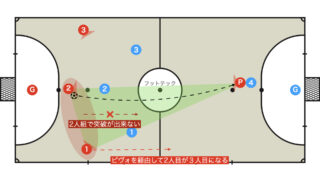
Pass to the opposite-side ala & recovery of floor balance
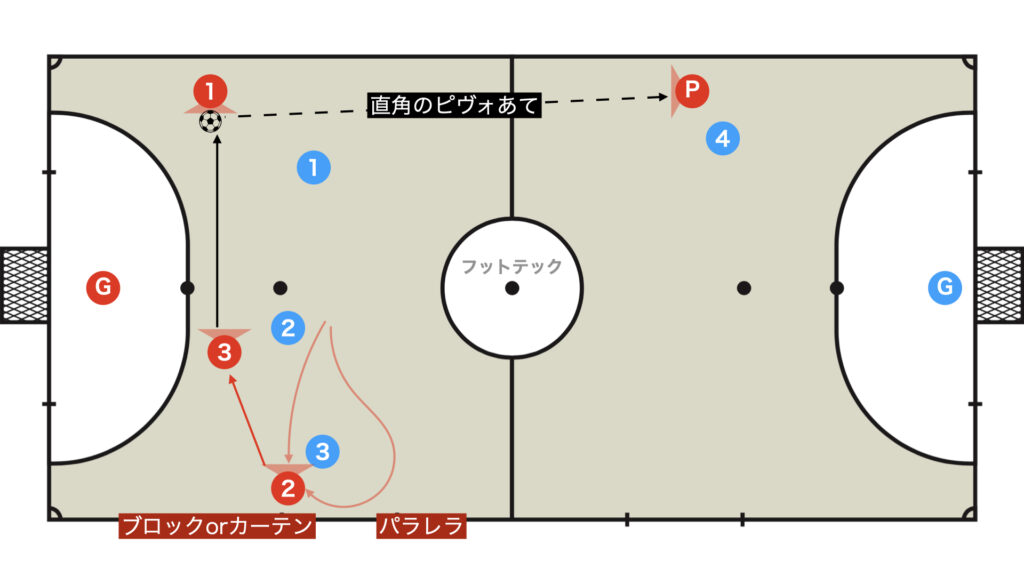
If a diagonal pivo pass is not possible, pass to the opposite-side ala and aim for a right-angle pivo pass (L).
Returning to the original position
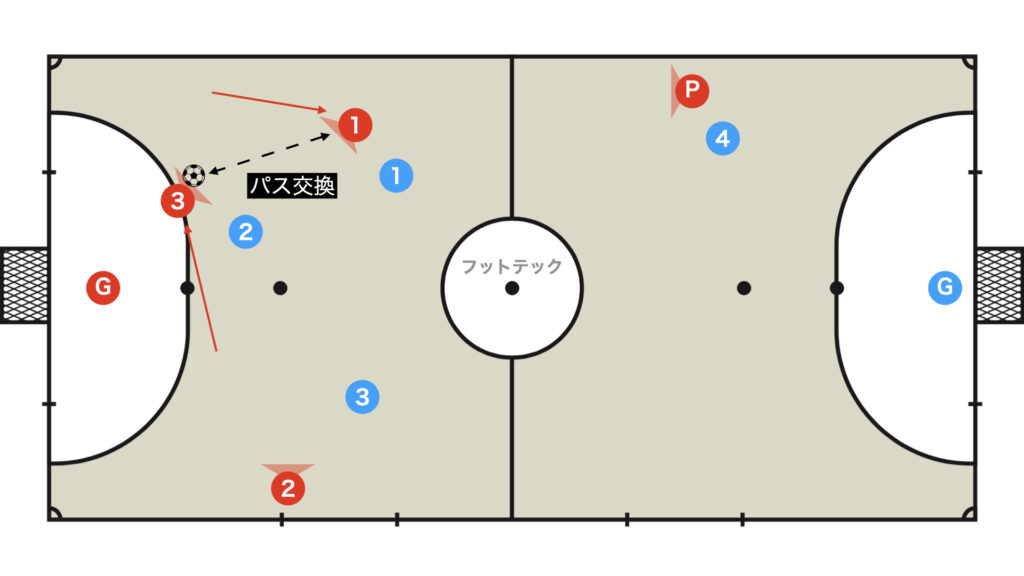
If a pivo pass is not possible, players exchange passes in order to reform the 3 on line.
Although it may initially seem awkward, this passing exchange is designed to deliberately draw the opposing defenders in and open up space behind them.
Four-player rotation
If you wish to involve the false pivo in the back passing play, the four-player rotation, although slightly advanced, is effective.
On the other hand, there is a drawback in that a player who is not the pivo may end up playing as the false pivo, making it more difficult to create an initiating role from the frontline.
Overview of the rotation
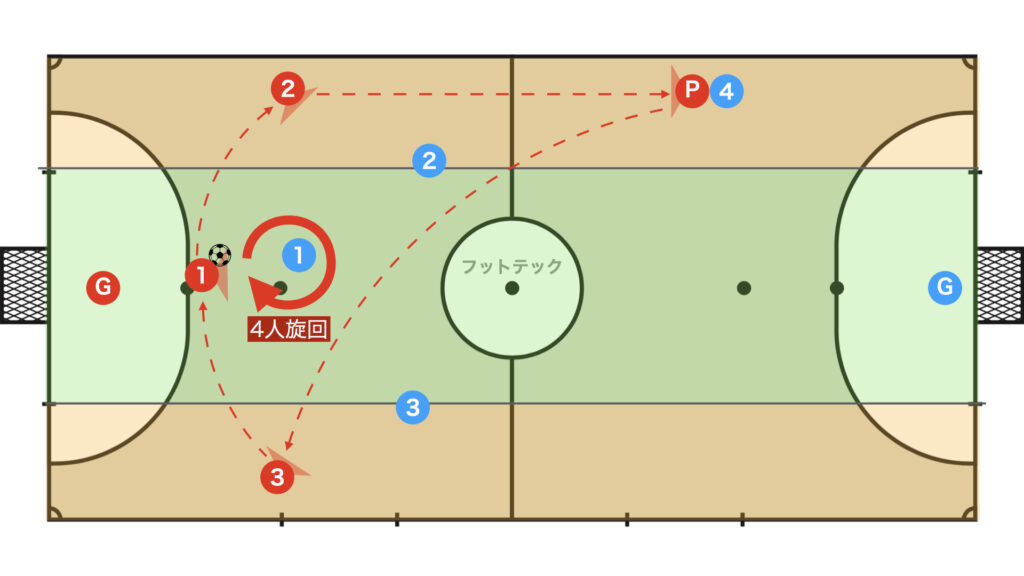
Basically, its essence is almost identical to that of the threesome rotation.
However, the position changes within the 3 on line—where the pivo drops out and the ala fills the space left by the pivo—differ slightly, which will be explained in detail.
When two defenders join the dropped pivo: Back door
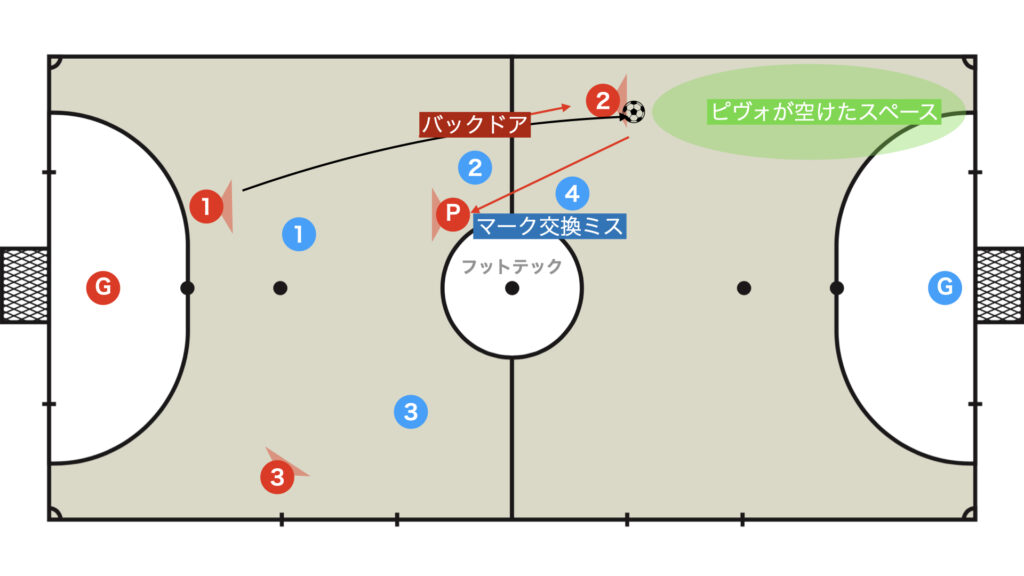
The primary objective is to provoke marking exchanges that force the opposition into mistakes.
When two defenders join the ala: Utilize the dropped pivo
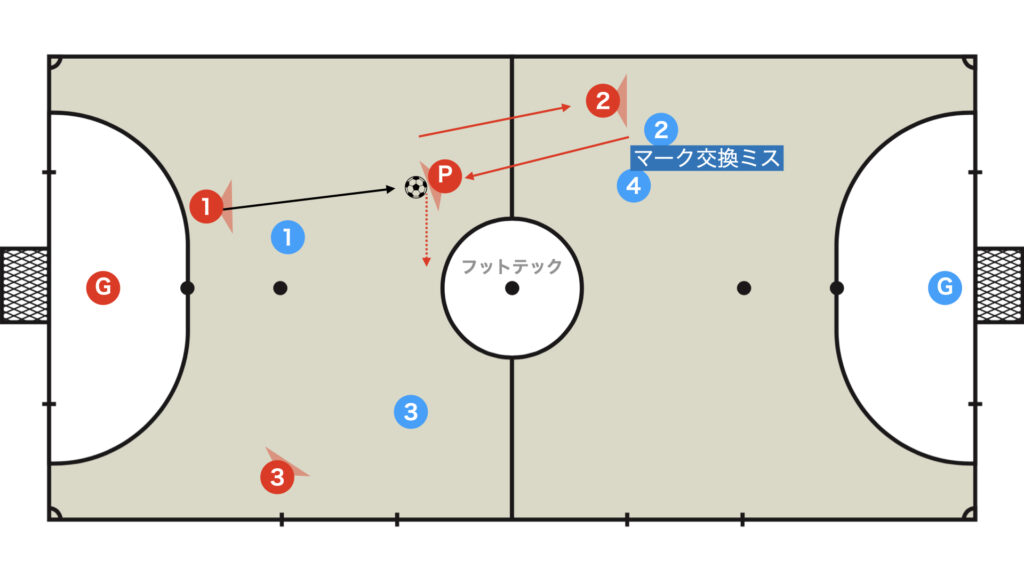
After this, just like in the threesome rotation, the dropped false pivo and Red 3 work together to form a duo.
Indirect Block or Indirect Curtain
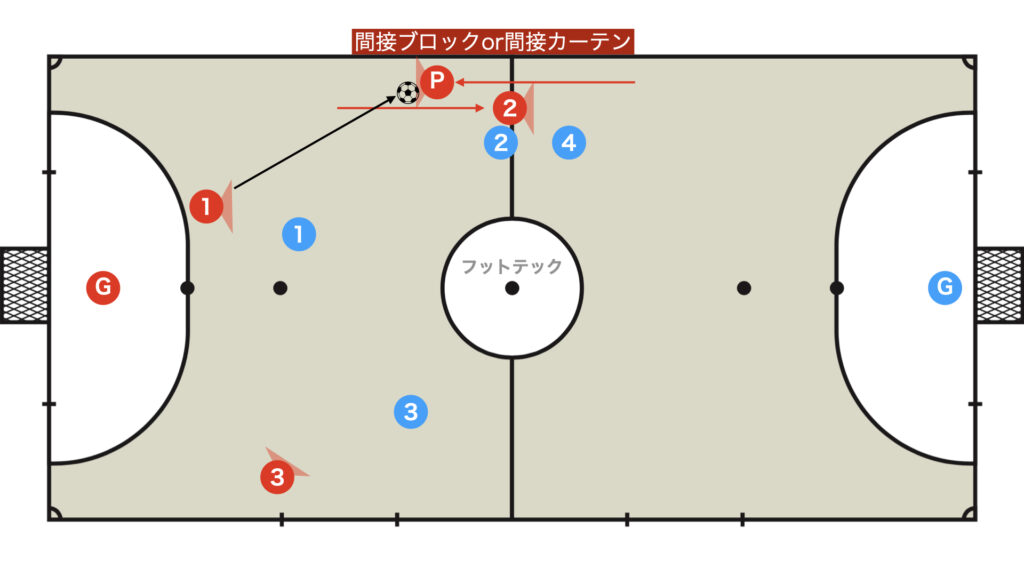
By supporting the dropped false pivo with an indirect block or indirect curtain, the ball can be received in an advantageous position.

Thank you very much for reading this article to the end.
If you found this article useful, please consider sharing it using the social media share buttons above.
We regularly share valuable insights on futsal tactics on Twitter, so if you haven’t followed us yet, we’d appreciate your support!
We are committed to raising the level of futsal in Japan by sharing high-quality information through discussions with individuals who have coaching experience in the F.League and overseas.
If you have any questions or notice any mistakes, feel free to leave a comment below.
We update our articles regularly, so if you’d like to keep reading, please bookmark our site or search for “FutTech”!
